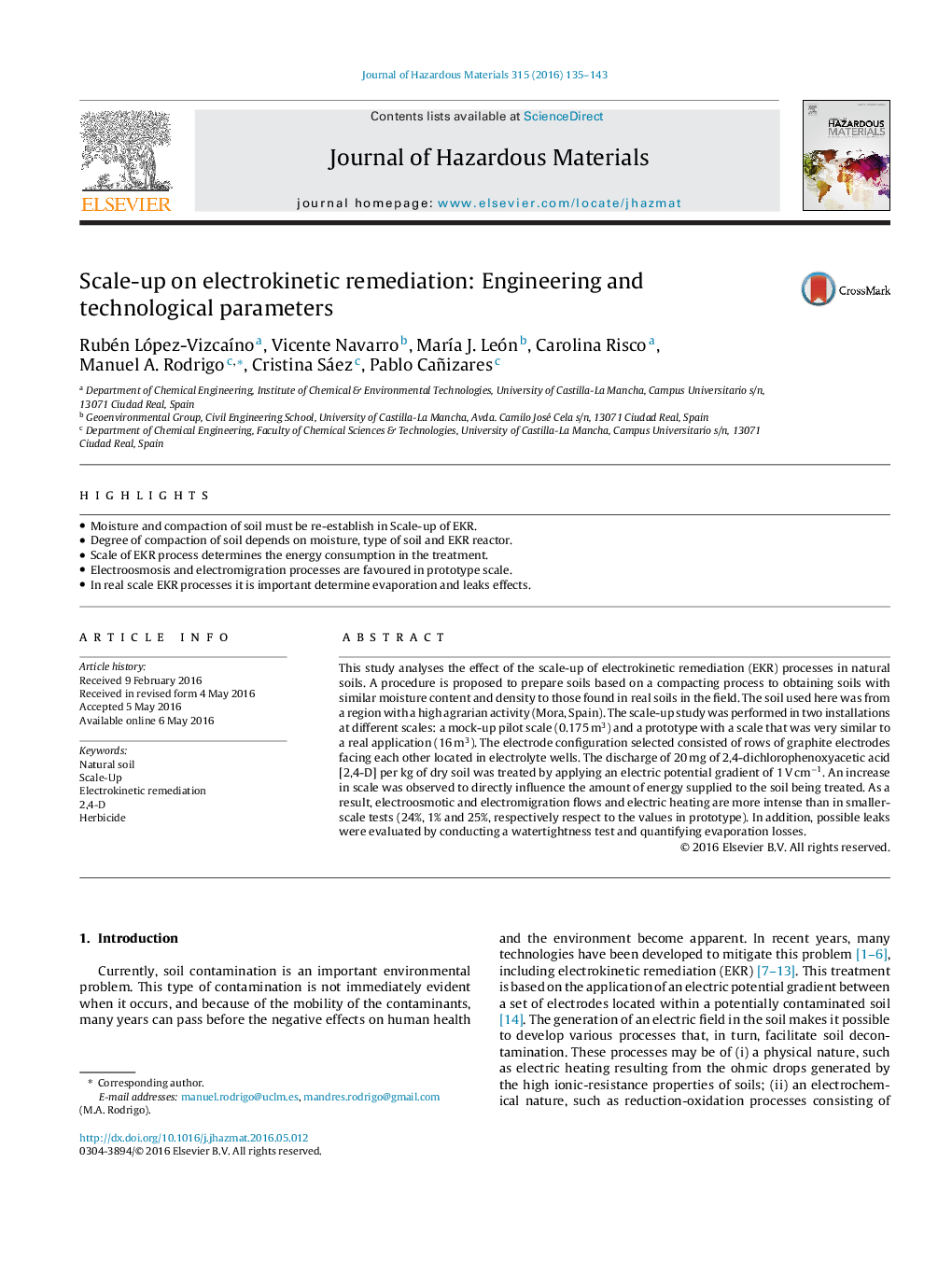| Article ID | Journal | Published Year | Pages | File Type |
|---|---|---|---|---|
| 575239 | Journal of Hazardous Materials | 2016 | 9 Pages |
Abstract
This study analyses the effect of the scale-up of electrokinetic remediation (EKR) processes in natural soils. A procedure is proposed to prepare soils based on a compacting process to obtaining soils with similar moisture content and density to those found in real soils in the field. The soil used here was from a region with a high agrarian activity (Mora, Spain). The scale-up study was performed in two installations at different scales: a mock-up pilot scale (0.175Â m3) and a prototype with a scale that was very similar to a real application (16Â m3). The electrode configuration selected consisted of rows of graphite electrodes facing each other located in electrolyte wells. The discharge of 20Â mg of 2,4-dichlorophenoxyacetic acid [2,4-D] per kg of dry soil was treated by applying an electric potential gradient of 1Â VÂ cmâ1. An increase in scale was observed to directly influence the amount of energy supplied to the soil being treated. As a result, electroosmotic and electromigration flows and electric heating are more intense than in smaller-scale tests (24%, 1% and 25%, respectively respect to the values in prototype). In addition, possible leaks were evaluated by conducting a watertightness test and quantifying evaporation losses.
Related Topics
Physical Sciences and Engineering
Chemical Engineering
Chemical Health and Safety
Authors
Rubén López-VizcaÃno, Vicente Navarro, MarÃa J. León, Carolina Risco, Manuel A. Rodrigo, Cristina Sáez, Pablo Cañizares,
